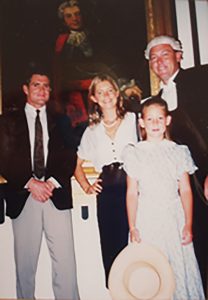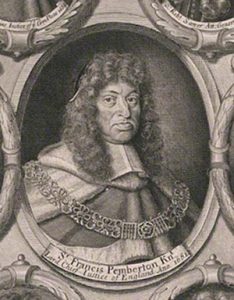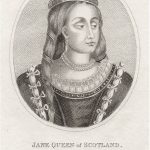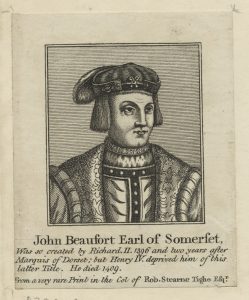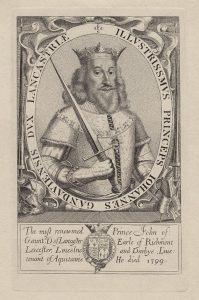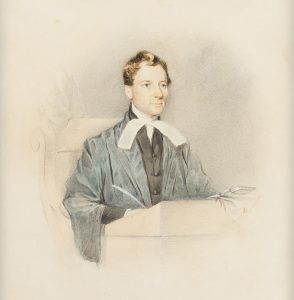Shafston House, Kangaroo Point, Brisbane completed in 1852 by Henry Stuart Russell
“Bold and Excellent”
About Tyndall & Co.
Tyndall & Co. ® is a firm with several disciplines- a legal practice including financial services and investment advice, a management consultancy and an immigration lawyer. It is an unusual fusion, but the common thread is helping the client.
Lawyers
The Tyndall & Co. ® ethos is that it has a duty to practice the “calling” of lawyers, which is to help, protect and serve clients. It is a “calling lawyer”.
The firm strives fearlessly to obtain outcomes in the client’s best interests by all lawful and proper means, to the best of the firm’s skill and diligence. This includes seeking justice and advocating for clients in all types of situations.
It is a small and private law firm. In a world of the “mega-lawyer” (1), small is beautiful! The big firms in “mega-law” (2) have been criticised by academics that they are more focused on the business of law rather than on helping people (3).
Tyndall & Co. is the opposite of the mega-lawyer and actually wants to help clients.
It has clients who are rich and poor, who have been clients for many years and who value this difference and the human approach.
These are not just words. The firm provides free or pro bono law work and has contributed over many years to pro bono causes and to isolated or socially disadvantaged people who lack economic resources. Tyndall & Co. conducts the annual “Pro Bono Cafe” which, according to clients, has been a huge success (see Blog).
This is why Tyndall & Co. is a “calling-lawyer”.
Financial services
As part of its law practice, Tyndall & Co. also provides financial services in accordance with the Corporations Act. These include consulting, investment, securities and derivatives advice, structuring strategic investments, banking and financial planning. Being part of a law firm, the financial advice comes with solid legal knowledge so as to help the client make better strategic decisions.
Management Consultants
“Management is the art of achieving objectives through the efforts of other people”.
Being lawyers we are better placed to advise and help clients reassess and to change their management approach, structurally. This way clients can achieve agreed management objectives, which may have been overlooked or not realised to their fullest potential. We help our clients live in the solution, not the problem, and have the legal strength to help put them there.
If you want to merge or expand and meet new partners, we can assist you in Australia, UK and Europe. We can help you at both strategy and implementation levels.
Immigration Lawyers
Tyndall & Co. is also an immigration lawyer, providing migration advice, a full range of visa services and representation in visa refusal appeals.
Being a lawyer, provides the client with added advantages over and above a normal migration agent who is not a lawyer.
For example, client files and information can be protected by “legal professional privilege” in certain cases, which means that the lawyer/ can’t be compelled to release confidential client information such as client contact details. See Migrate.
1. Marc Galanter uses the term “mega-law” in his article “Mega-Law and Mega-Lawyering in the Contemporary United States” 1983 2. Ibid. 3. Laumann and Heinz (1977)
Tyndall & Co. Locations

75 Jonson Street, Byron Bay

46 Cavill Avenue, Surfers Paradise

12 Hans Rd, Knightsbridge, London, England

14F, 8 Hennessy Rd, Wan Chai, Hong Kong
Admission and Call
Jonathan was called to the New South Wales Bar more than 30 years ago, on 7 February 1992. He is admitted to practise as a solicitor and barrister of the Supreme Court of New South Wales and the High Court of Australia. He is licensed to practice nationally and internationally, including in England and Wales and travels to do cases anywhere. He is also an immigration lawyer and a management consultant.
Jonathan is a member of the Law Society of New South Wales, the New South Wales Bar Association and the Migration Institute of Australia. He is also a member of the Law Society of England and Wales.
Jonathan is experienced and has been practising as a lawyer for more than 30 years. He has an advocacy background having started his law career as a full time barrister for more than 16 years , prior to becoming a solicitor and barrister in 2008.
He started at the bar as a pupil and junior barrister in Edmund Barton Chambers (Level 44 MLC Centre, Martin Place, Sydney) in 1992 under the separate tutorships of eminent family law and commercial law counsel.
Education
The University of New South Wales awarded him a Master of Laws degree, specialising in Corporate, Commercial and Taxation law in 1994. Prior to this he completed a Diploma in Law (1991).

Jonathan de Vere Tyndall in Chambers 2017
He attended St Paul’s College at Sydney University (1973-1975) where he obtained a Blue in the winning Rawson Cup rowing team and then travelled overseas. His school education was completed at Shore (Sydney Church of England Grammar School) at North Sydney (1972) where he obtained a Hat-trick bowling in cricket playing another school and at Newington College (1966) in Killara.
Background
As well as being then a busy full time practising barrister, his successful legal articles known as the ‘Bush Barrister’ column were published by Rural Press, several regional newspapers and other publications over many years from 1999.
These articles were aimed at providing free access to legal comment to less advantaged people in remote regional areas who lacked information, at no charge. They did exactly that and according to feedback, have helped many people.
Jonathan has a strong commitment to pro bono causes since his admission and to assisting the less advantaged.
Jonathan previously worked in management consulting, which he continues with today, in mergers and acquisitions, listings and in merchant banking. For a time he was a publisher in London and a journalist in Argentina. He has lived in and travelled extensively to the United Kingdom, Europe, the Caribbean, South America and the USA.
His personal interests include organic farming, Ashtanga yoga, meditation, horse breeding, equestrian polo and social cricket.
Ancestry
Jonathan has prominent ancestors some of whom are mentioned here:
The Honourable Sir James Dowling Kt. MLC (1787-1844)
Image: Portrait of The Honourable Sir James Dowling Kt, MLC, the Second Chief Justice of the Supreme Court of New South Wales, on display in the Banco Court, Queens Square, Sydney painted circa 1837, pictured with his three-greats grandson Jonathan de Vere Tyndall (wigged) at his admission as a Barrister-at-Law on 7 February 1992 with other descendants Jason, Kate and Skye.
Sir James Dowling, the 2nd Chief Justice of the Supreme Court of New South Wales, was Jonathan’s three (3) greats grandfather, through his two (2) greats grandfather James Sheen Dowling and mother né Judith Dowling. Sir James was educated at St Paul’s School, London and was called to the Bar at Middle Temple in 1815. His son, James Sheen Dowling (1819-1902) was educated at Sydney College (now Sydney Grammar School) and Kings College London and was called to the Bar at Middle Temple in 1843 and later became Judge James Dowling. Judith Dowling (1921-2007) of Wahroongah, was educated at Frensham School, Mittagong, NSW. The Dowlings were Australian legal pioneers.
Sir Francis Pemberton (1625-1697)
Sir Francis Pemberton: Image from Bishops’ Council , courtesy National Portrait Gallery, St Martins Place, London WC2 NPG D43262 npg.org.uk/collections
Sir Francis Pemberton, the Lord Chief Justice of the Kings Bench and Chief Justice of the Court of Common Pleas, was Jonathan’s seven (7) greats grandfather, through his three (3) greats grandmother Cecil Charlotte Pemberton (1795-1867), his two (2) greats grandfather Henry Stuart Russell, and his great grandmother Marie Stuart Russell. Sir Francis Pemberton was educated at St Albans School in Hertfordshire and Emmanuel College, Cambridge and was called to the Bar in 1654 at Middle Temple, and to the degree of Serjeant-at-Law in 1675. His eldest son Francis Pemberton (1675-1762), Jonathan’s five (5) greats grandfather, was educated at Eton and Kings College, Cambridge and was called to the Bar in 1705. He rebuilt Trumpington Hall in Cambridgeshire.
Henry Stuart Russell (1818-1889)

Robert Stewart, 8th Baron Castle Stewart (1700-1742)
Robert Stewart, 8th Baron Castle Stewart, County Tyrone, Ireland, was Jonathan’s six (6) greats grandfather through his daughter Elinor Stuart. She was Andrew, the 1st Earl of Castle Stewart’s, sister. Elinor Stuart married James Hamilton of Woodbrook and Strabane Esq, who was Jonathan’s five (5) greats grandfather (1) . James Hamilton was a cousin of the Marquess of the Abercorn. Later his son, John Hamilton, became the Baronet Sir John Hamilton, with a distinguished military career in the British Army, his family motto was “Sola virtus nobilitas” which translated means: “Virtue alone is true nobility”.
James Hamilton, the 2nd Earl of Arran (1517-1575)
James Hamilton: Image courtesy National Portrait Gallery, St Martins Place, London WC2 NPG D25177 npg.org.uk/collections
James Hamilton, the 2nd Earl of Arran, Regent of Scotland and the Duke of Chatellerault (France) was Jonathan’s eleven (11) greats grandfather. He arranged the marriage of Mary Queen of Scots to the Dauphin of France, Francis.
Mary Stewart, Princess of Scotland, the Countess of Arran (1453-1488)
Mary Stewart, the Princess of Scotland and the Countess of Arran was Jonathan’s legitimate thirteen (13) greats grandmother. Her mother was Mary of Guelders, and her grandmother was Catherine of Cleves. Mary Stewart’s brother was James III of Scotland, and great granddaughter was later Mary Queen of Scots.
James II, King of Scots (1430-1460)
James II, King of Scots: Image courtesy National Galleries of Scotland, by unknown artist after 1598
King James II was Jonathan’s fourteen (14) greats grandfather through his daughter Mary Stewart, Princess of Scotland and the Countess of Arran.
James I, King of Scots (1394-1437)
James I, King of Scots: Image courtesy National Galleries of Scotland, by unknown artist after 1578 Joan (Jane) Beaufort Engraved and published in ‘The Scottish Gallery’ by John Pinkerton, 1799.
King James I was Jonathan’s fifteen (15) greats grandfather. He married Joan Beaufort, the grand-daughter of John of Gaunt, 1st Duke of Lancaster and Margaret Holland, grand-daughter of Joan, the Fair Maid of Kent, who was also mother of Richard II. James met Joan (Jane) when he was imprisoned by the English for 18 years (from the age of 12), including time spent in the Tower of London and Windsor Castle. He was sadly assassinated at Perth Castle in 1437 but Joan survived, as did his son.
John Beaufort, Earl of Somerset (1373-1409)
John Beaufort, Earl of Somerset: Image courtesy National Portrait Gallery, St Martins Place, London WC2 NPG D23929 npg.org.uk/collections
John Beaufort, the Earl of Somerset was Jonathan’s 16 greats grandfather. His grand-daughter was Margaret Beaufort, who married Edmund Tudor and was the mother of Henry VII and forebear of the Tudors.
John of Gaunt, Duke of Lancaster (1340-1399)
John of Gaunt, Duke of Lancaster Image: c by George Yate, early 17C Courtesy National Portrait Gallery, St Martins Place, London WC2 NPGD37148 npg.org.uk/collections
John of Gaunt, Duke of Lancaster, was Jonathan’s 17 greats grandfather.
Henry II, King of England (1133)- Plantagenet, Duke of Normandy
King Henry II was Jonathan’s twenty-three (23) greats grandfather. He married Eleanor of Aquitaine. He established the Assizes, Trial by Jury and the concept of double jeopardy (“autrefois convict”), that a person could not be convicted twice for the same crime. His mother was Empress Matilda, Plantagenet.
1. John Bourke’s Peerage and Baronetage of the British Empire, 1832 Vol. 1 @ p. 569; John Debrett’s Baronetage of England, 1830 (revised) @ p. 254; family papers.)
Admissions to practice:
The Supreme Court of New South Wales, The High Court of Australia
Registered Foreign Lawyer (England and Wales)
Memberships:
The Law Society of New South Wales The New South Wales Bar Association Migration Institute of Australia
Historical interest:
About the Dowlings: ‘Fortis et Egregius’ (See: Australian Royalty)
Biography of Sir James Dowling, Kt (1787-1844) (by C. H. Currey)
Biography of James Sheen Dowling (1819-1902) (by A. R. Dowling)
Biography of Henry Stuart Russell (1818-1889) (Australian Dictionary of Biography by C.G. Austin and Clem Lack)
About the Dowlings- “Fortis et Egregius” (Bold and Excellent)
The Dowlings were English barristers, father and son, who were both called to the English Bar at Middle Temple in 1815 and 1843 respectively. Both went on to be prominent Judges in the early days of then new colony of New South Wales.
The first James Dowling, was born in London 1787, was educated at St Paul’s School, London and was called to the English bar (1815) at Middle Temple in London. He was supported by Henry Brougham, then a barrister, who later became the Lord Chancellor of England.
His father Vincent was Irish, and educated to the Dublin Bar. His brother, Vincent, was admitted in 1829 at Grays Inn, London and became the editor of Bell’s Life of London, a famous magazine; another brother Alfred was also a barrister, called to the English bar in 1828 at Gray’s Inn and later in 1842 at Serjeants’ Inn and later became a Judge of the County Courts in Yorkshire; and another brother Joseph was admitted 1825 at Middle Temple. There was a strong family connection to the English Bar.
The first James Dowling, later became the Chief Justice of the Supreme Court of New South Wales, the second of the Chief Justices in the history of the Court and was knighted. He became a member of the Legislative Council. He presided over the first sittings of the Supreme Court in Maitland in the Hunter Valley and he took the Supreme Court to Norfolk Island in 1833.
His son James Sheen Dowling, born London 1819, studied at Sydney College (now Sydney Grammar School) and Kings College, London and was called to the English Bar in 1843 at Middle Temple in London.
He later became Senior Judge of the District Court of New South Wales and was the third Judge of that Court and an acting Supreme Court Justice. He took his Court by horse and coach to the outback of New South Wales to do justice. His memoirs during his travels with the Court record much of early Australian colonial life.
Sir James owned 7 acres of land on Woolloomooloo Hill (near South Dowling Street and Woolloomooloo Bay), Sydney in addition to 2,560 acres in the County of Durham, England.
Both father and son passed away a generation apart at the 2 Broughams- Sir James at “Brougham Lodge”, Darlinghurst near Victoria St and then Judge James at “Brougham” in Woollahra near Queen Street in Sydney, (photo above). These homes were named after Henry Brougham, a Barrister who became Lord Chancellor of England who made the Chancery Court and pushed for reform to create divorce law granting women property rights.
Sir James’ meticulously hand written case notes recorded early Australian colonial legal history and were only recently published as part of the Dowling legacy, finely edited by two barristers Messrs. Castle and Kercher.
The writer attended the launch of the “Dowling Select cases”, by the Francis Forbes Society at the Bar Association of New South Wales in 2005 .
The Dowlings saw the Bench and Bar grow from England to New South Wales and were true pioneers of Australian legal history.
The Honourable Sir James Dowling, CJ (1787-1844)
Judge, Barrister, born 1787 at Exeter Court, Strand, London, England (the third son of Vincent Dowling 1756-1825); educated at St Paul’s School, London, admitted to Middle Temple, London in 1810, called to the English Bar 1815, later appointed the second Chief Justice of the Supreme Court of New South Wales and Member of the Legislative Council of New South Wales (Upper House).
Reading:
Australian Dictionary of Biography by C.H. Currey
The Dowling Legacy: Foundations of an Australian legal culture 1828 to 1844 By T D Castle and B Kercher; Francis Forbes Society, Sydney, 2005
Dowling’s Select Cases, 1828 to 1844 Edited by T. D. Castle and B. Kercher; Francis Forbes Society, Sydney, 2005; Review by David Ash, Bar News 2005 @ p. 52
Pioneer Families of Australia by P.C. Mowle, Angus & Robertson 4th ed.
James Sheen Dowling (1819-1902)
Judge, Barrister, born 1819 at Palsgrave Place, The Strand, near St Clement Danes Church London, England (second son of Sir James Dowling), educated at the Sydney College (now Sydney Grammar School), admitted to Middle Temple London 1836, graduated in 1841 with an LLB at King’s College, London and called to the English Bar in 1843, and then the New South Wales Bar in 1845, appointed third Judge and later Senior Judge of the District Court of NSW and acting Justice of the Supreme Court of NSW.
Reading:
Australian Dictionary of Biography by A.R. Dowling
J.S. Dowling “Reminiscences of A Colonial Judge”, Federation Press ISBN 1862871752 (Editor: Anthony Dowling)
Keith Shadforth Sheen Dowling (1889-1971)
Gunner Keith Dowling was born in Chatswood, Sydney and went to Shore School. In World War I, he enlisted as a Private, without commission and then became a Gunner. He served with the Australian Imperial Force (AIF), extensively in the field and saw fierce fighting in France. He marched in France once landed after England and fought there. His two brothers Eric and Bruce also served in the AIF and took up commissions. Keith’s letter from France to his mother on Armistice Day ,11 November 1918 is in the War Memorial:
What a godsent Xmas box for the world!
“By JOVE!!! Crikey!!! What shall I say? We’ve just had a breathless bombardier of the guard rush into the dugout, fall over the bed at the end and shout out some glorious news – can’t repeat it, as it’s strictly against orders to mention the subject (or I could have filled a book with the last two weeks’ entertaining furfies!) but you just note the date! Only hope this is dinkum, as he swears it is! What a godsent Xmas box for the world!” (Link: https://www.awm.gov.au/articles/blog/godsent-christmas-box-world]
At the end of the war, he returned to Australia started a family, and became the chairman of W. Balchin Ltd, Merchants (1848) Sydney and then became a farmer at Springfield, Muswellbrook.
Keith enlisted again for WW2 and obtained the rank of Captain. In his military career he obtained 5 medals: in WW1 the British War Medal and the Victory Medal; and in WW2 the War Medal 1939-1945, the Australia Service Medal 1939-1945 and the General Service Badge. When at school, Keith was the stroke of a rowing 8 and played cricket. He was also a great horseman. Keith was Jonathan’s grandfather. Lest we forget.




